 |
 |
 |
| |
Potent Targeted Activator of Cell Kill (TACK) Molecules Eliminate HIV Infected Cells
|
| |
| |
CROI 2022 Feb 11-16
Reported by Jules Levin
Carl J. Balibar1, Daniel J. Klein2, Beata Zamlynny2, Tracy L. Diamond1, Zhiyu Fang1, Carol A. Cheney1, Marina Bukhtiyarova3, Yangsi Ou3, Min Xu3, Abdellatif ElMarrouni4, John F. Fay3, Shih Lin Goh3, Daria J. Hazuda1, Bonnie J. Howell1, Antonella Converso4
1Infectious Disease and Vaccines, Merck & Co., Inc.; Kenilworth, NJ, USA; 2Computational and Structural Chemistry, Merck & Co., Inc.; Kenilworth, NJ, USA;
3Quantitative Biosciences, Merck & Co, Inc. Kenilworth, NJ, USA; 4Discovery Chemistry, Merck & Co., Inc.; Kenilworth, NJ, USA.
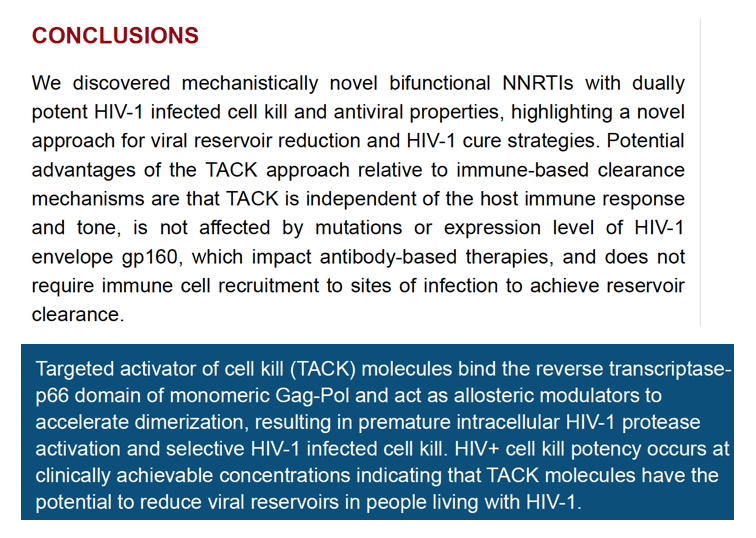
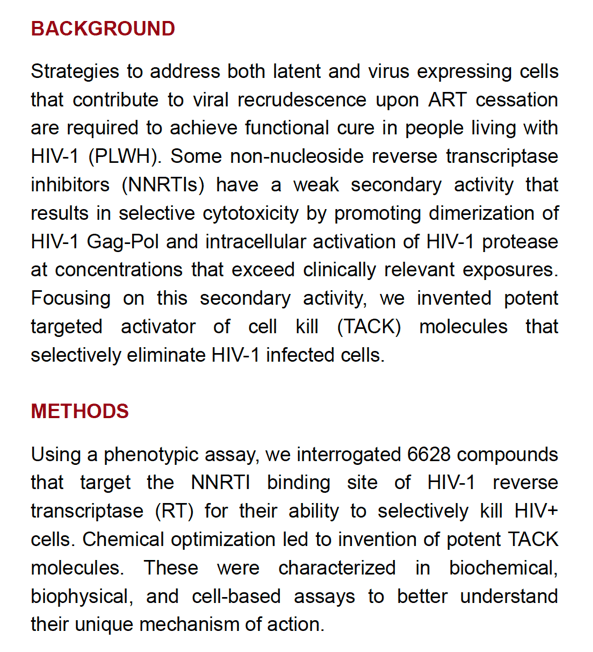

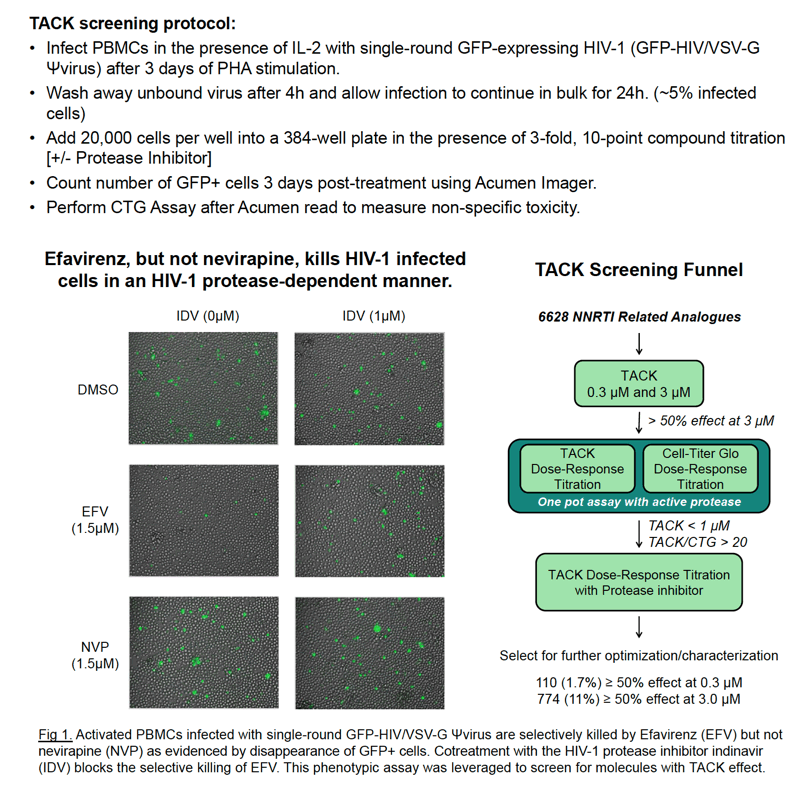

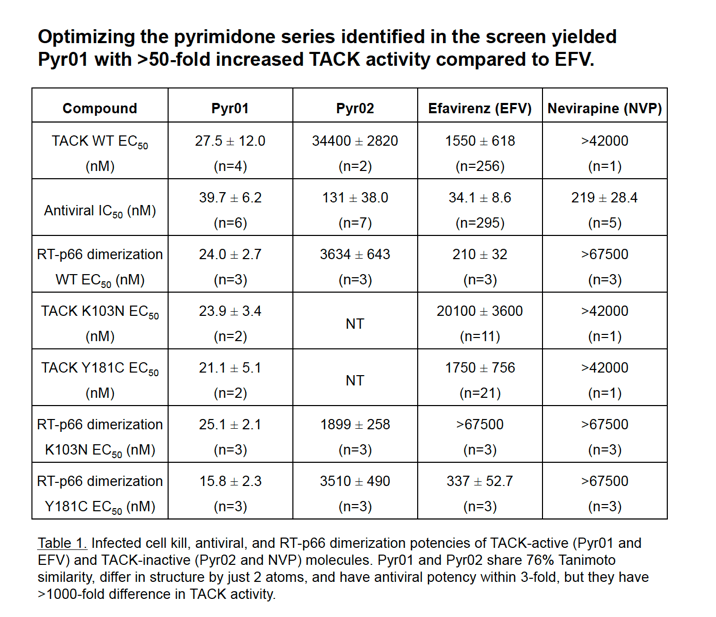

Fig. 3. Understanding TACK activity of pyrimidones and the relationship to RT-binding and dimerization. (A) Crystal structure of Pyr01 and Pyr02 bound to RT p66/p51. Pyr01 and Pyr02 bind to the expected NNRTI binding site within the p66 subunit, with minimal conformational differences between the two structures. The green cones represent the direction towards which the highlighted residues move going from one state to the other (B) The C-ring of Pyr01 makes two hydrogen bonds with the backbone amide and carbonyl oxygen of K103. (C) The C-ring of Pyr02 makes only a single water-mediated hydrogen bond to the backbone of K103. (D) Correlation of TACK potency and EC50 of RT-p66 dimerization - measured using a homogenous time resolved fluorescence (HTRF) assay utilizing two differentially labeled recombinant HIV-1 RT-p66 proteins, the relevant species in the context of full-length cellular Gag-Pol - for 712 pyrimidone analogues synthesized during optimization of TACK activity, R2 = 0.75.
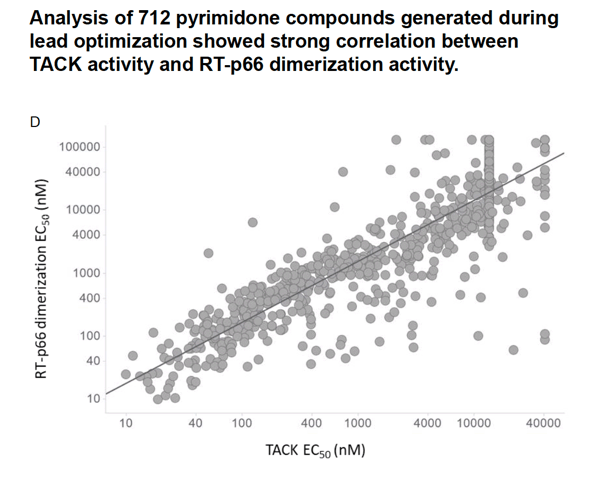

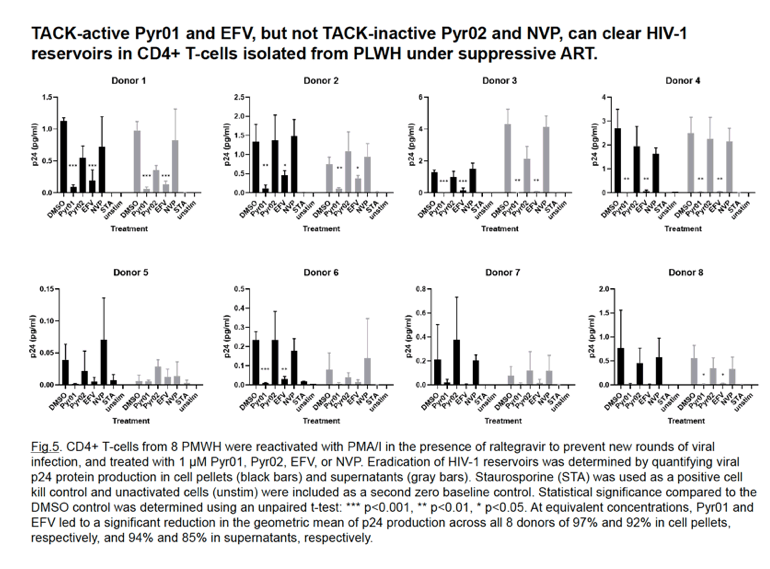
|
| |
|
 |
 |
|
|